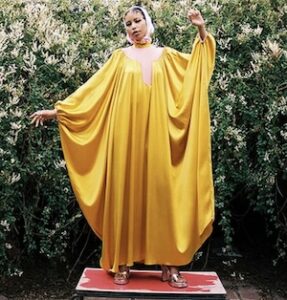The Art of Cropping
By Valentina Kohli
Oh, crop what can it be?! Firstly, the idea of seeing partially cropped figures in a painted canvas dancing their way out of the shot to create a sense of movement. Secondly, the deed of shredding a print of art to protest its priceless worth at an art auction; or finally, the notion of crop art (exactly what it says), art created by literally using harvested crops as a medium instead of paint or pencil. From Edgar Degas to Banksy via Sam Herd, The Art of Cropping explores how three artists utilise different techniques of cropping.
Image Ellie Darby Prangnell
The 1800s changed European art. 1826 saw the invention of photography, allowing people to see what really happened rather than an artists impression, for example, proving to artists the correct motion of galloping horses. It was then followed by Japan’s entry into world trade in 1853, subsequent to 200 years of isolation from the rest of the world. Japan began trading with Western countries, granting to their demands for Japanese goods, such as porcelain and ceramic items. Japanese Ukiyo-e woodblock prints came to Europe as protective packaging and wrapping for these items. Ukiyo-e, meaning ‘pictures of the floating world,’ dominated the Japanese art scene between the 17th and 19th centuries, illustrating the transience of everyday life through decorative colours and asymmetrical compositions. Ukiyo-e prints captivated European artists and soon began to be imported for their own sake.
Edgar Degas (1834-1917) is known for his paintings of ballet dancers and was highly influenced by Ukiyo-e prints and photography. Subsequently, the combination of photography and Ukiyo-e prints, influenced Degas to merge its distinctive characteristics to convey spontaneous ambiences within the canvas. Hence, portraying the everyday tasks and routines through embellishing colours, disproportioned configurations and cropping of figures, either cropping a bisection of their bodies or accentuating movement through partly seen walking or dancing figures.
Another version of cropping in its very literal sense, for example, is Banksy. The street artist who has risen in ranks through his anonymity, becoming one of the most controversial artists of our time. Specifically, Girl with Balloon created in 2006, illustrates a young girl releasing or reaching for a heart-shaped balloon. The symbolisms derived from the artwork are numberless. During Sotheby’s auction of the print in 2018, the print began descending through a shredder fitted inside the frame by Banksy himself, therefore turning the artwork into ribbons. “It appears we just got Banksy-ed,” remarked Alex Branczik, Sotheby’s Senior Director and Head of Contemporary Art in Europe. Banksy posted a video on Instagram confirming the deliberate act of shredding the print, whereby renaming the print to Love is in the Bin.
In its most innate definition, cropping can take the form of crop art. Indeed, crop art is an environmental art movement, utilising seeds, plants and/or flowers to create artworks in natural landscapes. In 2015, the Minneapolis Institute of Art commissioned Stan Herd to recreate Olive Trees, an 1889 painting by Vincent van Gogh, over 1.5 acres of farmland in Eagan, Minnesota. In fact, the artwork was in sight by passengers landing at St. Paul International Airport in Minneapolis. To depict the beguiling colours and textures of the original masterpiece, Herd planted an assortment of crops. Additionally, aligning and arranging rocks, compost, mulch, and soil to inaugurate a novel and contemporary approach to post-Impressionist art.
Crop it like it’s hot, if you enjoyed The art of cropping, why not read Nice Trim next?
.Cent magazine London Be Inspired; Get Involved





